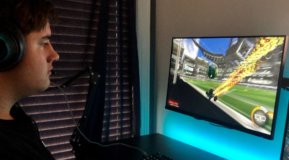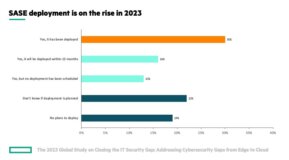Thanks to all who joined the webinar on April 25th.
Q: Typically there is a limitation for the number of clients per AP. With AC, is the limitation the same or is this number increased? If so, by what number?
A: This limit is artificial and set by the vendors.
Q: does density = speed apply in G and N?
A: Yes
Q: What is the range comparison of ac vs n at the 40Mhz band
A: You really can't ever discuss range by itself in wireless - it's always rate-vs.-range. We expect .11ac to exceed .11n in every case here.
Q: How much do you gain with jump in throughput given the overhead comparing 40mhz w/ .n vs .ac?
A: This is in the Table presented in the webinar and slides
Q: Do those smart phone rates assume 2x2, not 1x1?
A:Most handsets, if not all, will be single-stream.
Q: How should we prepare our campus for when students bring 802.11ac devices to their dorm room. Suggested configuration settings?
A: It all depends upon how much overall network capacity you have. But there's no harm in setting the maximum speed for all user connections, and then using management features to pritotize class of service if necessary.
Q: Question: Id like to know why 1Gbps from the endpoint, but the wired infrastructure does not necessarily need to be built like for like to support 1Gbps per user.
A: Because the standard (and related marketing) always references peak PHY rates, it's natural to think that these are user data rates. They are not. We usually assume that actual data rates will be between a third and a half of full rated PHY speed, and that's been what we've seen for a very long time. So, no need to worry about exceeding the 1 Gbps switch port limit.
Q: Can I mix an 802.11n AP and 802.11ac in the same building?
A:Yes.
Q: Is .11ac backward compatible with .11b/g?
A: I don't have a copy of the latest draft, but I seem to recall that .11ac will fall back to .11a. It can't fall back to .11b, because .11b is 2.4 GHz. It absolutely will fall back to .11n.
Q: Wondering how I will need to use 80MHz because of capacity. How will I be able to deploy 20 access points with the limited channels available without having channel interference between AP's on the samr channel. Is the solution turning down the power?
A: One thing we didn't discuss is how ARM will deal with this. In general, the management system makes a first pass at these decisions, and then you have to see what it has done. In reality, only two or three 80 MHz. channels can be deployed in any given venue. The point is, though, to use all the channels. Transmit power will be managed by the system, so this can work quite well.
Q: 11ac is only 5GHz? so max for 2.4GHz is 11n.
Yes
Q: Going from 11n to 11ac for a phone indicated going from 150 to 200 Mbps. But won't the 11n range for 11ac 200Mbps be less than that of 11n?
A: 802.11ac is 5-GHz. only. We generally suggest that deploying two 20-MHz. .11n channels and one 20-MHz. .11g channel (for legacy devices) at 2.4 makes the best use of this spectrum. Range is unclear, but I expect that the rate-vs.-range of .11ac will be at least as good as .11n in every case (at least in part becasue .11ac can fall back to .11n).
Q: During the webinar, you mentioned about "dense ap deployment" or "minimum distance, maximum throughput." With this in mind, if I were to deploy more APs(dense AP deployments) to increase capacity and throughput, will this lead to more interference on channels since there are a limited number of non-overlap channels?
A: Not necessarily. While it's true that denser AP deployments will have higher levels of co- and adjacent channel interference with static settings, intelligent solutions like ARM will optimize channel assignments and power level settings per AP to avoid that.
Q: How does Aruba AP deal with this increase in interference if any ? Is this mean I have to reduce the power transmit(EIRP) or use "channel re-use" by AP in dense AP deployment?
A: Aruba ARM will do this dynamically
On 802.11ac 80MHz channel width, what would be the channel bonding pairs be? How many 80MHz channels are there in the 5GHz band?
A: In 11ac, the following 80MHz channels are defined (ignoring regulatory restrictions):
- 42: combining channels 36, 40, 44, 48
- 58: combining channels 52, 56, 60, 64
- 102: combining channels 100, 104, 108, 112
- 122: combining channels 116, 120, 124, 128
- 138: combining channels 132, 136, 140, 144 (144 is a new channel introduced in 11ac)
- 155: combining channels 149, 153, 157, 161
Note that in the US (FCC rules), channel 122 is currently not allowed for use and channels 58, 102 and 138 require DFS, leaving 2 VHT80 channels without and 3 with DFS.




